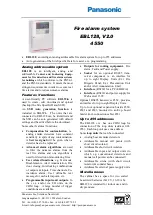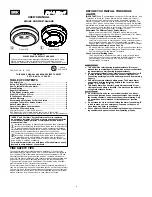
- 13 -
3329690_ut_GB
ENGLISH
GB
SERVICING
INSTRUCTIONS AND WARNINGS FOR SERVICING
Keep the appliance at peak effi
ciency by car-
rying out the scheduled servicing procedures
recommended by the manufacturer.
Proper servicing will allow the best perfor-
mance, a longer working life and constant
maintenance of safety requirements.
Important
Before carrying out any servicing procedure,
activate all the safety devices provided and
decide whether staff at work and those in the
vicinity should be informed .
Disconnect the Smok from the electrical pow-
er supply socket.
Also make sure that during the maintenance
procedure, that the operator is always able to
check whether the plug is disconnected from
the power outlet.
At the end of each session of use
and whenever
necessary, clean:
– The Smok.
– The appliance and the surrounding envi-
ronment (see page 13).
Every 100 working hours
have skilled, autho-
rised personnel carry out the following opera-
tions:
– Check the heating element is undamaged.
– Check that the electrical system is in good
working order.
CLEANING INSTRUCTIONS
Since the appliance is used for preparing foods
for human consumption, special care must be
paid to everything relating to hygiene, and the
appliance and the entire surrounding envi-
ronment must constantly be kept clean.
Important
Always disconnect the power supply cable
from the electrical mains whenever cleaning
is performed.
The precautions which follow are also impor-
tant.
Caution - Warning
Do not expose the Smok to water jets and/or
high pressure washes.
Important
The drawer and the fume extraction pipe
must be washed after use. Use of professio-
nal detergents is permitted. They may be pla-
ced in a dishwasher.
– Clean all parts of the appliance with warm
water, food-approved detergents and non-
abrasive materials only.
Caution - Warning
Never use products containing substances
harmful or hazardous for health (solvents,
petroleum spirits, etc.).
– Rinse surfaces with drinking water and dry.
– Pressurised water jets may only be used on
external parts.
– Take special care not to damage stainless steel
surfaces. In particular, avoid the use of corrosi-
ve products and do not use abrasive materials
or sharp tools.
– Remove the limescale deposits which may
form on some of the appliance’s surfaces.
















































